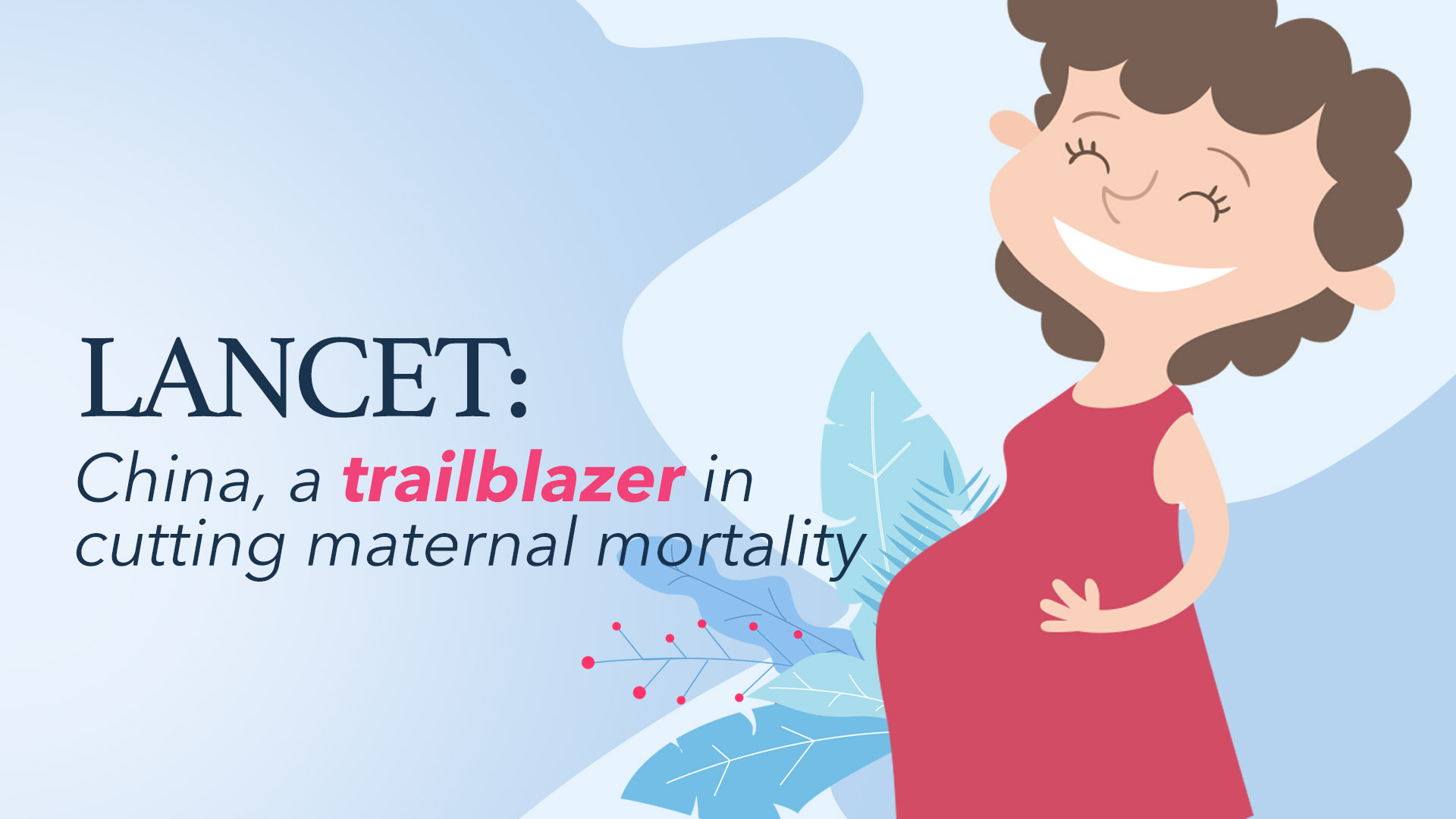
Opinion
10:44, 08-Mar-2019
Lancet: China, a trailblazer in cutting maternal mortality
Zhao Yuanzhen
03:06

Becoming a mother is one of the most important decisions a woman can make, but it could be one fraught with danger.
Every day, 830 or so women die from pregnancy or childbirth-related complications around the world.
Most of the deaths can be prevented with skilled care. And that's why 99 percent of maternal deaths happen in developing countries, where it is harder to get professional medical care.
Maternal mortality rates can be seen as an index of a country's overall development as they reflect serious inequalities. In 2015, the maternal mortality ratio in developing countries was 239 per 100,000 live births versus 12 per 100,000 live births in developed countries.
But are women in developing countries destined to face higher risks while having babies? Not necessarily.
China is one of the handfuls of countries that have achieved the Global Millennium Development Goal 5, which aimed to reduce maternity death ratios by 75 percent by 2015. The nation has experienced rapid declines in maternal mortality, from 111 per 100,000 live births in 1990 when the economy was about to take off, to 21.8 per 100,000 live births in 2015.
In a publication in the Lancet, a research group led by Zhu Jun and Liang Juan found in their study of China's 2,852 counties that even though there were gaps of income between counties, “diversity in economic development has not been translated into inequality in maternal mortality ratio at the county level.”
The Gini coefficient of maternal mortality ratio in China remained stable at 0.35 between 1996 and 2015, compared with an increase from 0.597 to 0.643 for inter-country inequality of maternal mortality ratio worldwide during the same period.
So are there other factors in play here?
According to Zhu and Liang, the decline may be largely due to a national project called the “Reducing Maternal Mortality and Eliminating Neonatal Tetanus." The program began in 2000, conducted under the “Safe Motherhood” framework. It is one of the most ambitious public health projects aimed at improving hospital delivery rates, as skilled and professional care is vital during delivery.
It is a 360-degree project under which county governments mobilized significant resources to get basic medical equipment and training while raising health awareness among women.
China's case is encouraging for all countries wishing to improve women's health, regardless of their economic levels. Pregnancy is already difficult and daunting enough for women. There should be ways to make it as safe as possible.
Script: Zhao Yuanzhen
Narrator: Mark Fontes
Animation director: Wu Xiao, Song Yuhan
Animation post-production: Yuan Min, Song Yuhan, Wu Xiao
Animation consultant: Luo Qing
Producer: Bi Jianlu
Supervisor: Mei Yan
(If you want to contribute and have specific expertise, please contact us at opinions@cgtn.com.)

SITEMAP
Copyright © 2018 CGTN. Beijing ICP prepared NO.16065310-3
Copyright © 2018 CGTN. Beijing ICP prepared NO.16065310-3